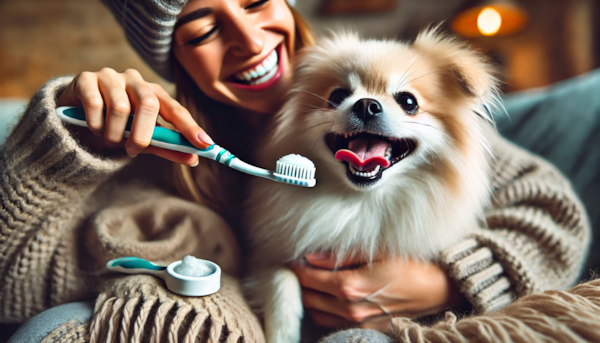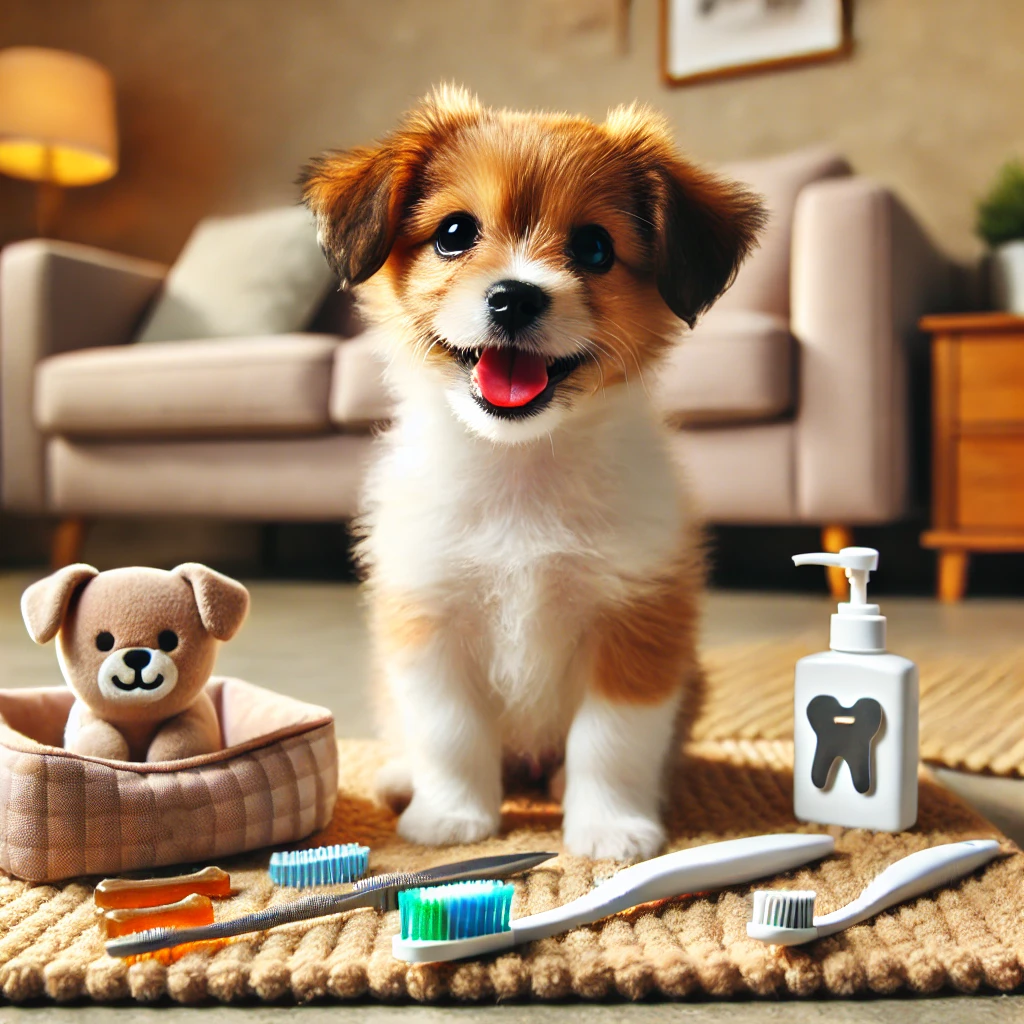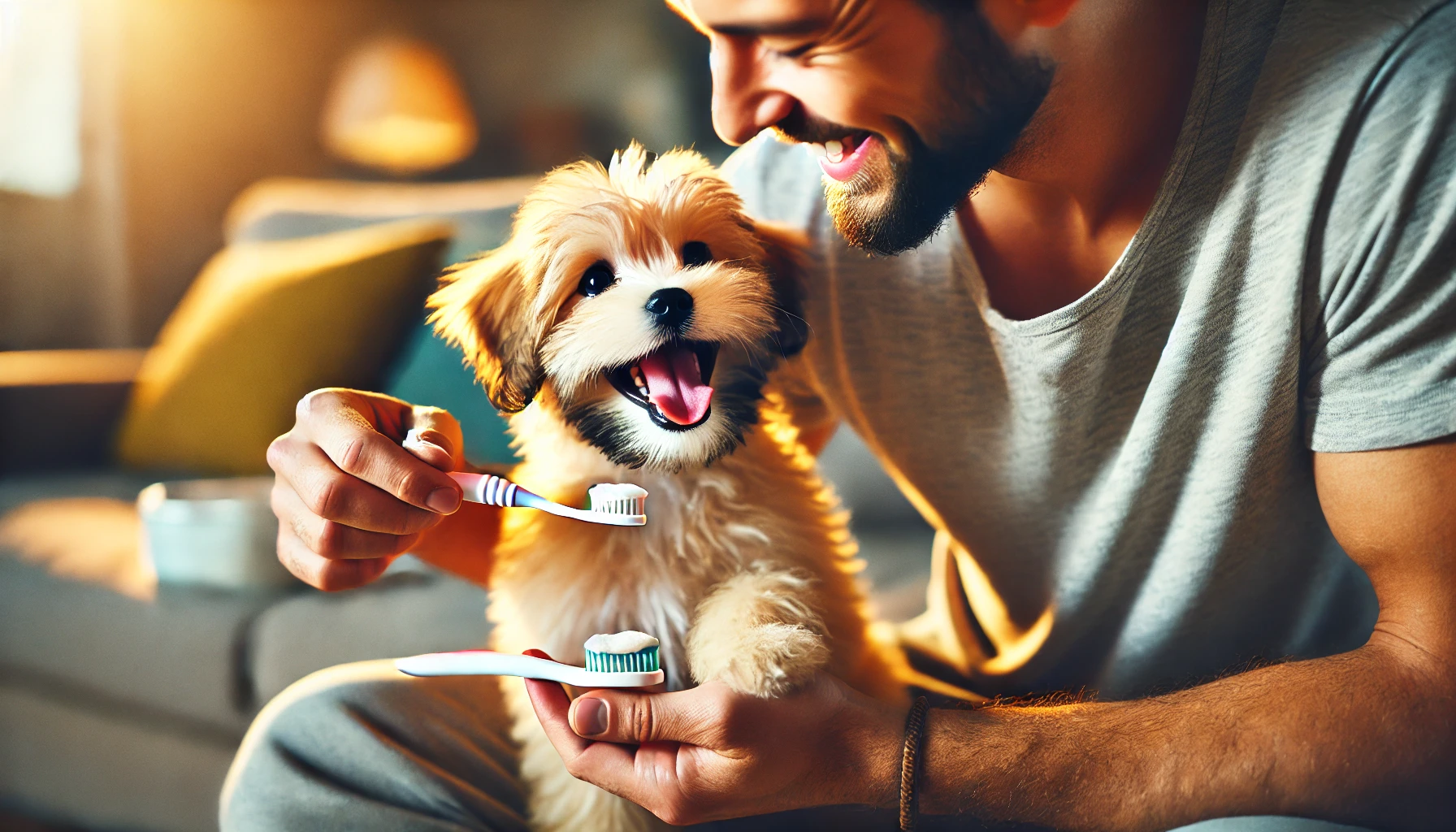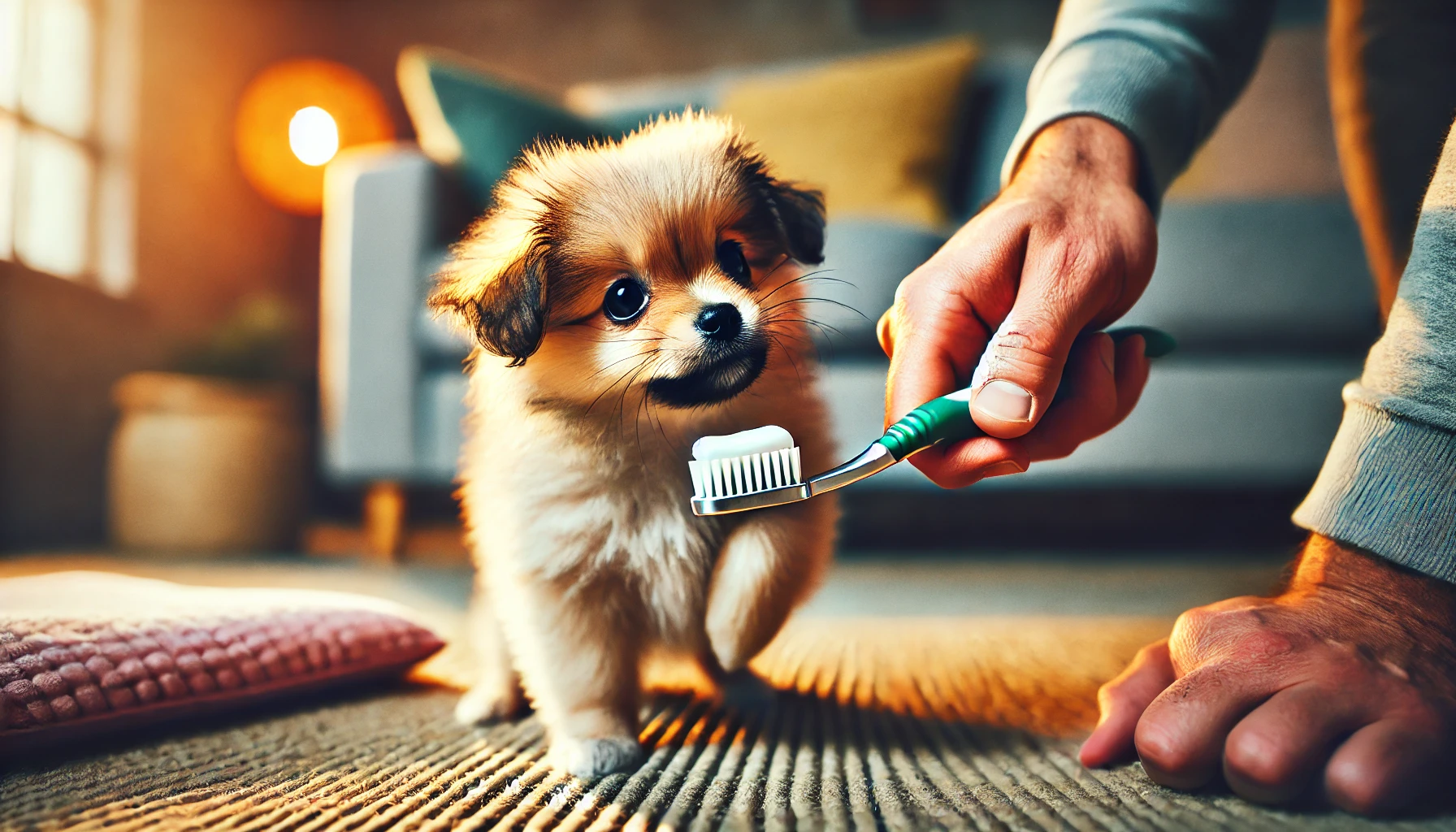
Keeping your dog's teeth clean is more important than you might think. Just like humans, dogs need regular dental care to prevent dental diseases and maintain overall health. Neglecting your dog's dental hygiene can lead to serious health issues, including infections that can affect the heart, liver, and kidneys. This guide will walk you through everything you need to know about brushing your dog's teeth, from understanding why it's essential to learning how to do it effectively. By the end of this guide, you'll be well-equipped to take care of your dog's dental health.
Table of Contents
Why Brushing Your Dog's Teeth is Important

Brushing your dog's teeth is crucial for several reasons. First and foremost, it helps prevent dental diseases such as gingivitis and periodontal disease. These conditions can cause pain, tooth loss, and infections that might spread to other parts of your dog's body, including the heart and kidneys. Regular brushing removes plaque and tartar buildup and reduces the risk of these serious health issues.
Another significant benefit of brushing your dog's teeth is the prevention of bad breath. While a dog's breath may never smell minty fresh, brushing can significantly reduce bad odors caused by bacteria and food particles in the mouth. This makes those close moments with your furry friend much more pleasant.
Choosing the Right Tools

Using the right tools can make a significant difference in how effectively you can brush your dog's teeth and how comfortable your dog feels during the process. Here’s what you need to know about selecting the best tools for the job:
Dog Toothbrush vs. Human Toothbrush: When it comes to brushing your dog's teeth, using a toothbrush designed specifically for dogs is highly recommended. Dog toothbrushes often have softer bristles and are designed to fit comfortably in a dog's mouth. Some even come with angled heads to make it easier to reach all areas of the mouth. Finger brushes, which fit over your fingertip, can be a great option for dogs that are new to tooth brushing and may feel more comfortable with this style.
Best Dog Toothpaste: It's crucial to use toothpaste formulated for dogs, as human toothpaste contains ingredients that can be harmful if ingested by pets. Dog toothpaste is available in flavors that dogs find appealing, such as chicken, beef, and peanut butter. These flavors make the brushing process more enjoyable for your pet. Look for a product with enzymatic formulas that help break down plaque and reduce tartar build-up.
Additional Tools: Besides a toothbrush and toothpaste, there are other tools that can help maintain your dog's dental hygiene. Dental wipes can be a convenient alternative for quick cleanings, while dental chews and treats designed to reduce plaque and tartar can complement regular brushing. Dental sprays can also help freshen your dog's breath and reduce bacteria in the mouth.
How to Brush Your Dog's Teeth

Brushing your dog's teeth may seem daunting at first, but with the right approach, it can become a simple and routine part of your pet care regimen. Follow these steps to ensure you're doing it correctly and effectively.
Step-by-Step Guide
- Get Your Dog Comfortable:
Start by getting your dog comfortable with having their mouth touched. Gently lift their lips and touch their teeth and gums with your fingers. Do this for a few minutes each day and reward them with praise and treats to create a positive association.
- Introduce the Toothbrush and Toothpaste:
Let your dog sniff and lick the toothbrush and toothpaste. Allow them to taste the toothpaste to get used to the flavor. This step helps your dog become familiar with the tools before you begin brushing.
- Brushing Technique:
Hold the toothbrush at a 45-degree angle to your dog's teeth. Use small, circular motions to brush along the gumline, where plaque tends to accumulate. Focus on the outer surfaces of the teeth, as this is where plaque and tartar are most likely to form. Be gentle to avoid irritating your dog's gums. If your dog seems uncomfortable, try using a finger brush or a dental wipe as an alternative.
- Duration and Frequency of Brushing:
Aim to brush your dog's teeth at least 2-3 times a week, though daily brushing is ideal. Each brushing session should last about 2 minutes. Consistency is key to preventing plaque buildup and maintaining good dental hygiene.
Common Challenges and Solutions

Brushing your dog’s teeth can come with its own set of challenges. Here are some common issues you might face and how to overcome them:
Challenge: Dealing with a Resistant Dog
Solution:
- Start Gradually: If your dog resists, begin by touching their mouth and gradually progress to brushing. Use your finger or a soft cloth initially before transitioning to a toothbrush.
- Positive Reinforcement: Reward your dog with treats, praise, and affection to make the experience positive. Over time, they’ll associate brushing with rewards.
- Short Sessions: Keep the initial sessions brief to avoid overwhelming your dog. Gradually increase the duration as they become more comfortable.
Challenge: Overcoming Bad Breath
Solution:
- Regular Brushing: Consistent brushing is the most effective way to combat bad breath. Ensure you brush your dog’s teeth at least 2-3 times a week.
- Dental Chews and Treats: Incorporate dental chews and treats designed to freshen breath and reduce plaque. Look for products approved by the Veterinary Oral Health Council (VOHC).
- Water Additives: Consider using water additives that promote dental health and freshen breath. These are easy to use and can complement your brushing routine.
Challenge: Recognizing Signs of Dental Problems
Solution:
- Check for Symptoms: Look for signs such as red or swollen gums, excessive drooling, difficulty eating, or brownish tartar on the teeth. Bad breath that persists despite regular brushing may also indicate a problem.
- Regular Vet Visits: Schedule regular veterinary check-ups to monitor your dog’s dental health. Professional cleanings may be necessary if there are signs of dental disease.
- Early Intervention: Address dental issues as soon as you notice them. Early intervention can prevent minor problems from becoming serious health issues.
Challenge: Managing Anxiety and Fear
Solution:
- Create a Calm Environment: Choose a quiet, comfortable place for brushing. A calm environment can help reduce your dog’s anxiety.
- Use Calming Aids: If your dog is particularly anxious, consider using calming aids such as pheromone sprays, calming treats, or anxiety wraps.
- Consult a Professional: For dogs with severe anxiety, consulting a veterinarian or a professional dog trainer may be beneficial. They can provide additional strategies or recommend desensitization techniques.
Conclusion

Brushing your dog's teeth is an essential part of maintaining their health. Regular dental care can prevent serious health issues, save on veterinary bills, and ensure your dog remains happy and comfortable.
Remember, starting a dental care routine may take time and patience, but the benefits are well worth the effort. Not only will you be protecting your dog from painful dental diseases, but you'll also be contributing to their longevity and quality of life.
Other Dog Care Articles That Might Interest You
How To Safely Clip Your Dog’s Nails
Puppy Training Guide for New Owners
Scroll down to see FAQs about brushing dog teeth
What To Read Next
How to Correct Unwanted Behavior in Dogs
Crate Training Guide
Frequently Asked Questions
What is the proper way to brush a dog's teeth? To brush your dog's teeth properly, start by getting your dog comfortable with having their mouth touched. Use a toothbrush designed for dogs and toothpaste formulated for pets. Hold the toothbrush at a 45-degree angle to the teeth and brush in small, circular motions, focusing on the gumline.
Is it OK to not brush your dog's teeth? It's not ideal to skip brushing your dog's teeth, as this can lead to plaque buildup, dental diseases, and other health issues. Regular brushing is crucial for maintaining your dog's dental and overall health. If brushing is challenging, consider using dental wipes, chews, or consulting your vet for alternative solutions.
Is it too late to brush dogs' teeth? It's never too late to start brushing your dog's teeth. Even older dogs can benefit from improved dental hygiene. Begin slowly and introduce brushing gradually using treats and positive reinforcement to make the experience pleasant.
How do you brush a dog's teeth that won't let you? For a dog that resists brushing, start by getting them used to having their mouth touched. Use a finger brush or dental wipes initially and reward them with treats. Gradually introduce the toothbrush and toothpaste and keep sessions short and positive.
Do dogs need toothpaste? Yes, dogs need toothpaste formulated specifically for them. Human toothpaste contains ingredients that can be harmful if ingested by dogs. Dog toothpaste comes in flavors like chicken or peanut butter, which makes brushing more enjoyable for your pet.
Do I brush my dog's teeth with water? Using water alone is not effective for cleaning your dog's teeth. You should use toothpaste formulated for dogs to effectively remove plaque and maintain dental health. Water can be used to rinse the toothbrush before and after brushing.
What percentage of dog owners brush their dog's teeth? Studies show that only a small percentage of dog owners, around 8%, brush their dog's teeth regularly.
How often should I clean my dog's teeth? Ideally, you should brush your dog's teeth daily. If this is not possible, aim for at least 2-3 times a week to prevent plaque buildup and maintain dental health.
Can you use human toothpaste on dogs? No, you should not use human toothpaste on dogs. Human toothpaste contains ingredients like fluoride, which can be toxic to dogs if swallowed. Always use toothpaste specifically formulated for pets.
How to brush small dog teeth? For small dogs, use a toothbrush designed for their size or a finger brush. Be gentle and use small, circular motions to clean their teeth and gums. Hold your dog securely but comfortably and take breaks if needed to keep them calm.
How to brush an aggressive dog's teeth? Brushing an aggressive dog's teeth can be challenging. Start by desensitizing them to having their mouth touched and use positive reinforcement. You may need to use a muzzle for safety and consult a professional trainer or veterinarian for additional strategies.
How to make homemade dog toothpaste? To make homemade dog toothpaste, you can mix baking soda with a small amount of water to form a paste. You can also add a bit of coconut oil or a dog-safe flavoring like broth for taste. However, commercial dog toothpaste is recommended as it contains enzymes that help break down plaque.
How many minutes should you brush your dog's teeth? You should aim to brush your dog's teeth for about two minutes. This duration allows you to thoroughly clean all teeth and gum areas. If your dog is not used to brushing, start with shorter sessions and gradually increase the time.



